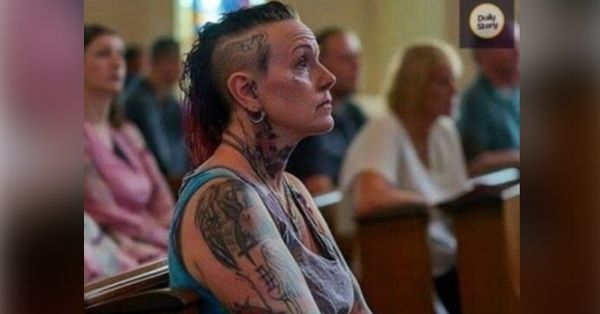
Last Sunday, as I entered the church, I was taken aback by the sight of a woman in her 40s seated in the pews. Her tattoos and piercings made quite the statement. It got me thinking about my own preconceived notions and the ever-evolving world around us.

This encounter sparked a deep reflection on my understanding of appropriate attire for church. After the sermon, I gathered the courage to mention to her that a more modest outfit might be better suited. Her response was eye-opening: “How I look has nothing to do with you.” It was a clear reminder that maybe my discomfort stemmed from outdated beliefs.
I started questioning whether my idea of church clothing was too traditional. In a time where personal expression is celebrated, is it fair to expect conformity to outdated norms? As our society advances, so should our understanding of individuality and what it means to dress “appropriately” for church.
The image of churchgoers in conservative dresses, suits, and ties may still be fresh in our minds. This unspoken dress code was seen as a sign of respect. But times are changing, and boundaries have blurred. Tattoos and unique fashion have become powerful symbols of personal expression.
Does this mean churches should abandon dress codes altogether? While modest attire may still hold significance for some, we must consider that what we wear should not limit our worship or sense of belonging. Isn’t church about acceptance and unity, rather than outward appearance?
At its core, the church is a community that thrives on unity. When we place too much emphasis on appearances, we risk losing the true essence of what it means to come together in worship. Judging someone based on tattoos or piercings means overlooking their individual stories and experiences.
Each person brings their own unique journey into the church. Tattoos and piercings often symbolize important moments or battles fought. By solely focusing on outward appearances, we may miss out on the richness and insights that can enhance our collective understanding of faith.
While embracing individuality is crucial, we must also show respect for tradition. For some, dressing modestly and concealing tattoos is a way to honor their upbringing. It acknowledges the comfort of those who may not be accustomed to more casual attire. However, expressing one’s faith is deeply personal and should be celebrated.
Finding a middle ground that respects tradition while embracing personal expression can create an inclusive worship environment where everyone feels welcome.
One solution lies in fostering a culture of mutual respect. Churches can encourage attire that honors personal style while maintaining reverence for sacred spaces. By promoting understanding, we can create a more welcoming atmosphere that embraces diversity and the significance of worship.
Allowing individuals to choose what feels right for them, while also being mindful of their surroundings, can lead to a harmonious and inclusive environment.
At the heart of most faith communities lies the principle of inclusivity. Jesus taught us to show compassion to those who are marginalized and judged. To embody these values, faith communities can focus more on a person’s inner faith journey rather than their outer appearance.
Whether it’s tattoos, casual clothing, or formal attire, what truly matters is the sincere pursuit of a spiritual connection. By embracing diversity in worship spaces, we can create a community where everyone is valued, regardless of how they choose to present themselves.



